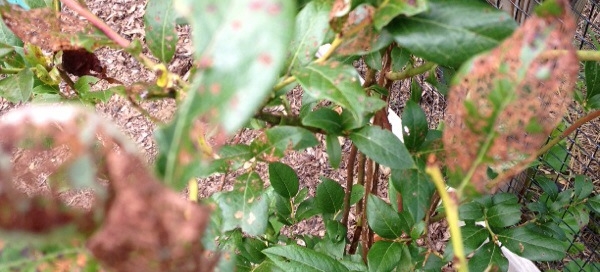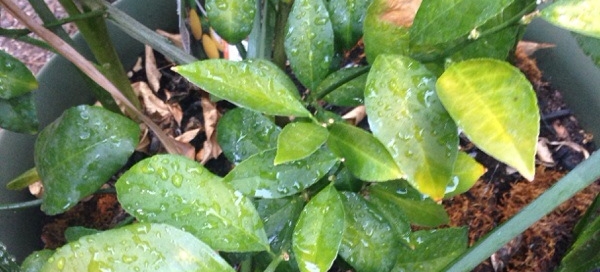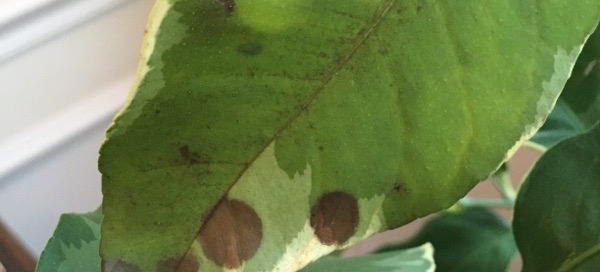Leafspot On Blueberry
Leaf spot on a blueberry bush is an indication that something is wrong because these plants are pretty problem free normally. Here are some possible causes and what action you could take. You can think about which of these might apply to your plants.
1. Fungal leaf spot. Fungi usually cause leaf spot when a plant is hit with water frequently, either from irrigation, sprinklers, frequent rainfall, or consistent hand watering. When watering is under your control water deeply once a week but no more frequently and whenever possible don't hit the leaves with water. Soaker hoses are a good way to water - turn them on for a couple of hours once a week. Fungal problems are the most common cause of leaf spots on all plants. To protect the other, non-damaged growth you could spray with an organic fungicide such as sulfur or Serenade, but the most important thing is to alter watering practices.
2. The plant has been hit with something that damaged the leaf tissues when it fell. This could be a household cleaner, liquid fertilizer applied to the foliage, hot water from a sun-heated hose, or other garden chemical such as drift from an herbicide. The only thing you need to do is to water the plant well once a week and don't repeat whatever might have hit the foliage in the past.
3. Worst case? You don't know and will never know. Even experienced gardeners have this happen occasionally. Sometimes we see symptoms and we can't figure out what has happened. In such times we are well served to monitor the plants and not respond with anything other than our attention. In order to tell if the damage is still going on, mark some undamaged branches with a wire "twist-em" or colored yarn, and see if those marked stems and leaves remain unmarked. Water deeply once a week, prune off any dead wood, and otherwise don't apply any other products to your plant. Chances are it will be fine and may not show symptoms next year.


